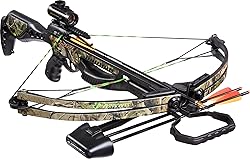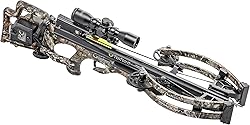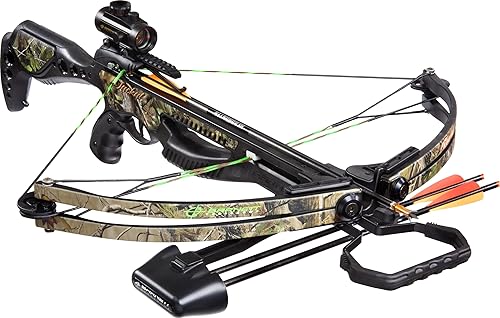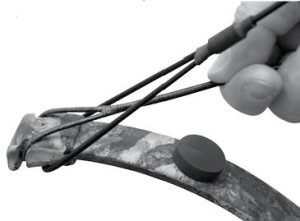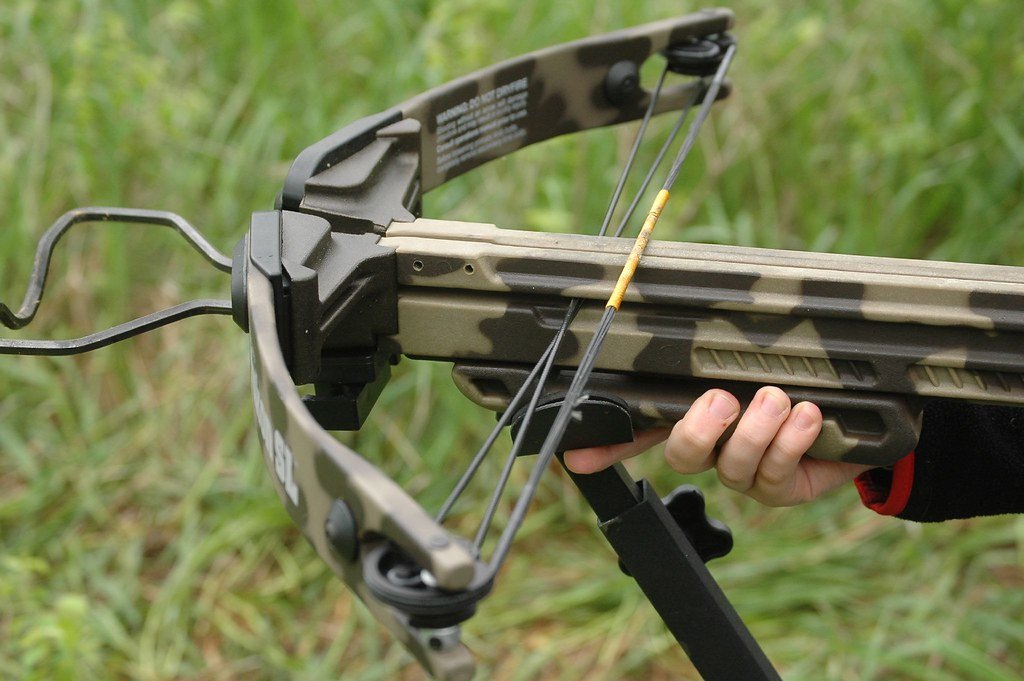
Crossbows For Hunting
Looking for the best crossbows for hunting?
Crossbows are fast becoming popular among bow hunters. Crossbows are easier for most people to learn with and have a lot more impact power able to take down the big bucks.
When going deer hunting, you want to have the best crossbow that you can, using a crossbow will help improve your accuracy, giving you a better chance at bagging that trophy buck this deer season.
Featured below you will find video reviews and more news about crossbows for hunting and other crossbow accessories.
Best Crossbow Reviews
Crossbows are one of the weapons developed centuries ago that changed the face of projectile warfare. Back where live ammunition wasn’t available yet, arrows were deadly because they could hit enemies that are a distance away.
Below are our choices for the best crossbow available. But because the cost of these weapons varies significantly from those around $100 to those over $1000 and more, we’ve divided the models by price so whichever cost you’re most comfortable with you’ll be able to get the best crossbow for your needs. Included with our choices are our crossbow reviews of each of these x-bows to give you a clear idea of why they’re among the top products in their class.
Cheap CrossbowsFor the beginner and those who don’t want to spend a lot of money for a crossbow, our list of the top cheap crossbows may be just what you’re looking for.
All considered, these are not cheap equipment. Many of them cost over $600 which is a sizable sum for most of us. So before jumping in and just buying any of the products be sure you know what you plan on using it for.
Here are some tips:
If you want it for recreation and just shooting at targets, maybe a mini crossbow or even a pistol crossbow will work. Our mini and pistol crossbow picks will probably be more useful for you.
If you’re more serious and want to shoot longer distances with them, and maybe do some hunting but want to stay on a budget, our picks below cover different price levels from those below $200, all the way to those just below $400.
If you’re planning to hunt with them, are committed to the sport, and willing to invest in equipment, our top hunting crossbows will give you good ideas.So now we move to the picks per price level.
Best Crossbow for the Money
Under $300
Barnett Jackal Crossbow Package
Topping our crossbow reviews best under $300 list is the Barnett Jackal Crossbow. While there are some lower cost models under $200, the Jackal’s build and performance gives it a step up above them. This weapon is a relatively short 12-inch draw length and ‘light’ 150 lbs. Cocking weight yet packs 315 feet per second arrow velocity on release. Still be sure to use the rope cocking device to ensure you’re cocking the weapon evenly on both sided.
One of the main reasons it is very popular is because it balances both cost and quality giving you hunting crossbow that can be used for harvesting turkey, elk, and deer. The Jackal comes with a military style stock, and its grip is separated. This lets users grip the weapon more like a pistol which leaves your hand with more freedom.
One of the best crossbows money can buy if you’re starting out or don’t want to spend a ton of money though it works well for experienced shooters and seasoned hunters as well. It uses a 3.5 trigger pull which is a standard Barnett uses in almost all its crossbows except for a select few.
This gives users the knowledge that they can quickly get that feel when switching or upgrade to other models. It also comes with dry fire prevention safety, so you don’t accidentally shoot when there isn’t an arrow seated or seated properly which saves the life of the crossbow.
[su_box title=”Pro:” box_color=”#7bff61″]
- Cheap
- Powerful
- Looks good[/su_box]
[su_box title=”Cons:” box_color=”#ff8d61″]
- Scope
- Heavy
- Strings split easily[/su_box]
What to Look for in a Hunting Crossbow
1. Have Enough Draw Weight
Game hunting has some regulations. One of which is hunters need to use a crossbow that passes the minimum amount of draw weight set by each state depending on which types of game you plan to hunt. For many locations, 125 lbs. Is the minimum but you should check your state’s
laws and make sure your crossbow fits the requirements.
The crossbow’s draw weight is an indication of its power. While not accurate this figure can give you a basic idea whether or not it is fit for hunting. Our best hunting crossbow picks range from 150 to 175 lbs. With some over that, which ideally the amount you want.
Note that you want enough draw weight and not too much. Too heavy a draw weight means it will be harder to pull the string back. So unless you are strong or use a cranking aid, you don’t want to get a draw weight that’s beyond what you can pull during the hunting trip.
2. It Must Shoot with Sufficient Speed
Just as important as draw weight is how fast it shoots. We’ve limited our picks to 300 FPS and above, which is something we recommend. While you can go down to as low as 250 or 275 FPS, having 300 ft/sec. or higher velocities lets you shoot a straighter trajectory within that first 40 yards for better accuracy.
The speed also guarantees that once the arrow hits its mark, it is still deadly enough to kill your prey cleanly.
Note that the draw weight isn’t a good indication of speed as you have some crossbows that have 175 lbs. of the draw and shoot 300 FPS, while others with that same cocking effort are easily reaching 330 to 350 FPS.
3. Have a Good Scope
With a hunting crossbow, you’ll be shooting at 20 to 40 yards away aiming at specific spots in the animal; you want a good scope that will show you your target as clearly as possible. You want multi-dot or multi-reticle scopes that let you judge the range properly. And also make sure they’re sighted in. If your scope uses batteries, make sure you bring spare batteries just in case.
4. The Less Noise the Better
Now when we speak of crossbows being loud, the first thing people will think of is how loud a sound the crossbow makes when it fires. While important, this is less essential than having a bow that can be cocked quietly and doesn’t make any noise as you set up.
With the speeds we’re dealing with, which is 300 FPS and above, the likelihood that the arrow hasn’t reached the prey that’s 20-30 yards away before they can react is less likely, than it being spooked by a loud clicking sound when the string hooks to the latch.
So just as important as having a quiet shooting X-bow or one with noise suppressors, get one that’s quiet to cock.
5. You Want Something Reliable and Easy to Cock
After waiting for hours the whitetail, you’ve been waiting for finally comes into your sights. At that exact moment what you don’t want is a crossbow that isn’t reliable, starts giving you issues or is difficult to cock. A smooth cocking dependable crossbow lets you cock, aim and shoot without problems. The opposite, on the other hand, can leave you with missed opportunities or cause you to make enough noise to scare it away.
6. Consider the length, width, and weight of the Crossbow
You’ll be carrying the weapon as you walk to your hunting grounds, maneuver it around to cock then aim and will be in a tight space with your hunting buddies. How long, wide and heavy a crossbow makes a difference between one that’s fun and convenient to use to one that you’ll just be leaving at home and using sparingly.
How To String A Crossbow
In this guide, we will take a look at the steps on how to string a crossbow. This process is something you’ll be doing throughout the life of your crossbow assuming you have a good one which will last for a long time. That’s because crossbow strings only last for a certain number of shots and after that, they’ll begin fraying.
You’ll want to change the string before it gets to the point when it can break when you’re taking the shot or cocking the bow since that will be dangerous.
The crossbow stringing and re-stringing processes are similar; the only difference is when you’re re-stringing, you’ll need to remove the current string before being able to put the new one in.
What You’ll Need
Here are the things you’ll need for this process:
1. Your Crossbow
2. A Crossbow Stringer
3. New string that’s made to fit your crossbow
Make sure that your new string fits the make and model of what you have. This will ensure that you have the proper length, and type of string. Refer to your owners manual which will have this information.
Steps on How to String a Crossbow
1. Find a clean flat surface where you can lay out all the things you need (the X-bow, new string, and stronger) neatly. Just as importantly, space should be big enough to let you cock the crossbow since you’ll need to do that to get the new string in.
Now that you’re ready and all the tools are there.
2. Take the crossbow stringer and insert the loop at the end of the string into the secondary shelf at the end of each limb tip. Don’t put them in the string grooves since that’s where the string will go in later. Make sure the stringer’s loops are in there securely since you’ll cock the bow using the stringer.
3. Pull the stringer back and cock the crossbow by placing your foot in the stirrup and pulling each side of the stringer to the trigger box (see our cocking your crossbow guide for step by step detail).

4. If you’re re-stringing your bow, remove the loops of your current string from the grooves on the limb tips, before going to the next step to insert the new string. If your stringing your crossbow, skip this step and go to the next one.
5. Take your string and insert one end on the string groove. There will be a hole in the stringer where you can slip the new string through to get to the groove. After you’ve placed one end, do the same for the other limb. When you have both ends of the string in the grooves you have your new string in place.
inserting new string to crossbow limb 26. Uncock you crossbow by either firing it with an arrow to the ground or safe target, or pull on the stringer and slowly let it down (while your foot is in the stirrup). When you’ve done this, all the tension will be one the bow and you’ve successfully strung or re-strung your crossbow.
7. Remove the stringer from your crossbow.
Some Additional Notes
This process only works for recurve crossbows not for compound ones. See our recurve vs. compound comparison for more information between the two. If you have a compound crossbow, you’ll need to take it to the shop to get it strung, re-strung since they’ll need to use a press to do that.
The stringer will be longer than the regular string. The reason for this is so you can easily insert it into the limb tips without bending the limbs.
Congratulations You’re Ready to Shoot
That concludes our tutorial on how to string a crossbow. And now it’s ready to be taken out to shoot.
How to cock a Crossbow
There are 3 different ways to cock a crossbow safely and efficiently. However, no matter which way you use, the first thing you need to remember when cocking is you must firmly seat your foot into the stirrup to avoid any accidents. The crossbow can easily come forward and hit your body parts during the draw cycle when you cock and make you injure.
Manually
In this way, I highly recommend you to use a marker to mark the string in even part of both sides flight track. So when you cock the crossbow, you know it is even all the way up above. After the string is marked, keep your fingers tight to the flight track and pull evenly all the way through until you hear a double click inside the trigger box. At that point, you can release the string. You can also verify it by checking your marks to make sure each one alongside the flight track inside the trigger box.
Using a rope cocking device
Firstly, you need to set the hooks on both tops of the cocking device onto the string of your crossbow. When you do this, do not worry if the hooks are up or down. The most important thing you need to make sure is both hooks are on the same face. After that, you can start to pull the device straight back to the trigger box, and as a result, the string which is held by hooks will be drawn together. Like the former way, you need to maintain even force in both sides of the cocking device during cocking process. And when you hear a double click inside the trigger box, you know that the string is in place.
Using a crank cocking device
Simply, it is a crank attached to the stock to help you cock the crossbow. After disengaging the safety of the crank, all you need to do is spinning the cranking handle to set the string onto right position. After that, you can remove the device easily. However, more convenient always goes along with more money. This device is only available on high-end crossbow models which cost you much money to own.


